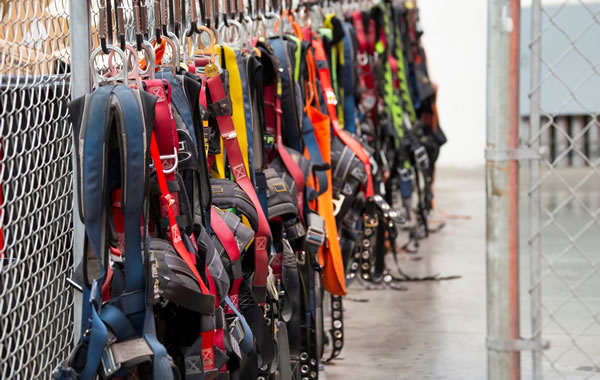Government Contracting Database
Documentation
Any claim, regardless of its size or complexity, must be supported by documentation if a contractor is to prevail. The best type of documentation is that which is prepared contemporaneously with the performance of the work. In other words, after-the-fact documents prepared in support of a claim are not as persuasive as documents which were prepared at the time the problems were encountered and before a claim was anticipated, or planned.
There is no doubt that field personnel often lack the time, or the inclination, to maintain project documentation. Those responsible for project documentation must be made aware of the possibility that one day they may be called upon to testify about events during the project. The ability to refer to contemporaneous letter, notes, diaries, photographs, etc. can be invaluable as a means of refreshing recollections several years later. In fact, many otherwise meritorious claims have been lost because of the contractor’s failure or inability to regularly document project events and problems.
In preparing a claim a contractor should not only refer to its own documentation, but should also consider whether documents from other sources might be useful. For example, it is often a good idea to make a Freedom of Information Act request in order to review the government’s files. The government normally maintains very complete files dealing with both the design and construction phases of the project. It may be that the government’s own memoranda will provide information in support of the construction contractor’s position. It is also possible that the records of a previous project on the same, or a related, site will be useful.
The types of documents which a contractor should maintain, or seek to review, are as follows:
- Original bid papers – The contractor should preserve its original bid, together with the supporting work papers in order to show exactly how the bid was prepared. There are many times when the government will assert that a contractor’s claim position is inconsistent with a reasonable prebid position. A contractor can overcome the government’s argument by producing its original bid and proving that it did not anticipate the costs which it ultimately incurred. It is also useful to obtain a copy of the government’s estimate in order to determine whether the government’s prebid assessment was any different than the contractor’s. The government cannot persuasively argue that a contractor should have anticipated particular costs when the government did not anticipate those costs in its own estimate.
- Letters – The contractor should provide timely notice of changes, differing site conditions, or any other matters which might result in a request for additional time or money. If matters in dispute are discussed with government representatives, it is a good idea for the contractor to confirm its position in writing by sending a letter to the contracting officer or his authorized representative. While it is not suggested that a flood of letters be sent to the government, it is always helpful if dispute matters are discussed in writing. In this regard, it is very important to respond, in writing, to letters coming from the government on matters in dispute.
- Daily Reports – The contractor should preserve copies of daily quality control reports and should prepare these reports diligently. Specific problems or events should be reported in the “comments” or “remarks” section of the report and these matters should be described in detail. In addition, the contractor should be careful and accurate in its preparation of daily logs of construction or any other daily reports which might later be used as a source of documenting what happened on a day to day basis. For example, if a dispute arises as to whether differing site conditions were encountered and how long those conditions affected progress of the project, daily reports which report the discovery of differing site conditions and explain the daily impact can be very useful. Daily reports should also document equipment utilization, weather, hours worked, manpower, delays, access problems, and visitors to the site.
- Contract Records – The contractor should maintain its copy of the original solicitation, solicitation amendments, as well as the contract and modifications. In addition, the original drawings and the revisions thereto should be preserved. Also, subcontract agreements and modifications should be maintained.
- Equipment Utilization Log – In addition to the information contained on daily reports, an Equipment Utilization Log should list equipment on the site each day, differentiating between owned and rented equipment, and reporting what equipment is used and what equipment is idle on a daily basis.
- Diaries – These can be useful to refresh a person’s recollection of what he was thinking, or what he observed, on the particular day in question. It is very important not to include “editorial” comments in the diary, or any other statements which might be a later source of embarrassment. The diary should be factually correct and supportable by eyewitness observations and other documentation.
- Visitors Log – It is useful to maintain a log of those people who visited the site each day. If the government contends, for example, that its geotechnical expert spent two weeks studying an alleged differing site condition, it would be very useful to show that the expert, in fact, only visited the site on one day. This kind of information can be used to undermine the credibility of an expert who would try to have others believe that he was thorough when, in fact, he only spent a short time studying the problem.
- Schedules – The original prebid schedule, together with updates during performance should be maintained. If a CPM was prepared using a computer, the data should be preserved in computer format.
- Telephone Records – Maintain memoranda of important telephone conversations showing the date and person contacted, and summarizing the content of the conversation.
- Photographs – All important aspects of the project should be photographed and these should be dated and initialed by the person who took the photograph. Also, it is a good idea to identify the subject of the photograph on the back so that the purpose of the photograph is clear.
- Videotapes – These can be far more illustrative than photographs, but care should be taken to avoid embarrassing comments on the audio portion. Daily videotapes, showing the date, can be very useful in demonstrating the nature of a problem.
- Tape Recordings – Audio cassette recordings can be a useful way to record the thoughts and observations of field personnel during performance. These tapes should be transcribed on a timely basis.
- Test Results – Records of all field and laboratory test results should be maintained.
- Cost Records – The contractor should maintain copies of checks, invoices, certified payrolls, quotations, and any other records relating to cost incurred. To the extent possible, costs should be segregated in order to relate specific costs to specific requests for additional compensation.
Updated: June 25, 2018
Looking for additional government contracting resources?
Search Our Database





























